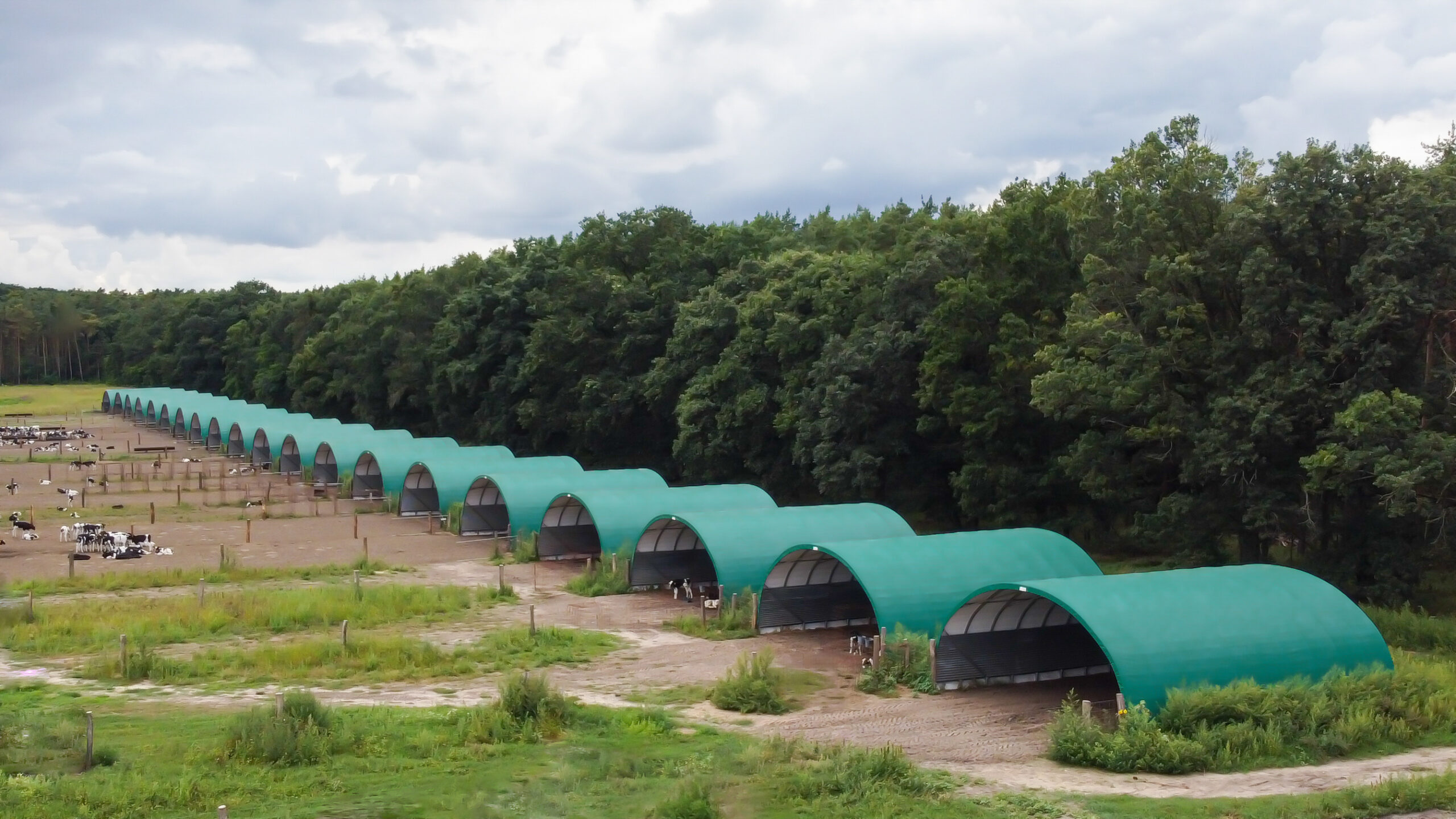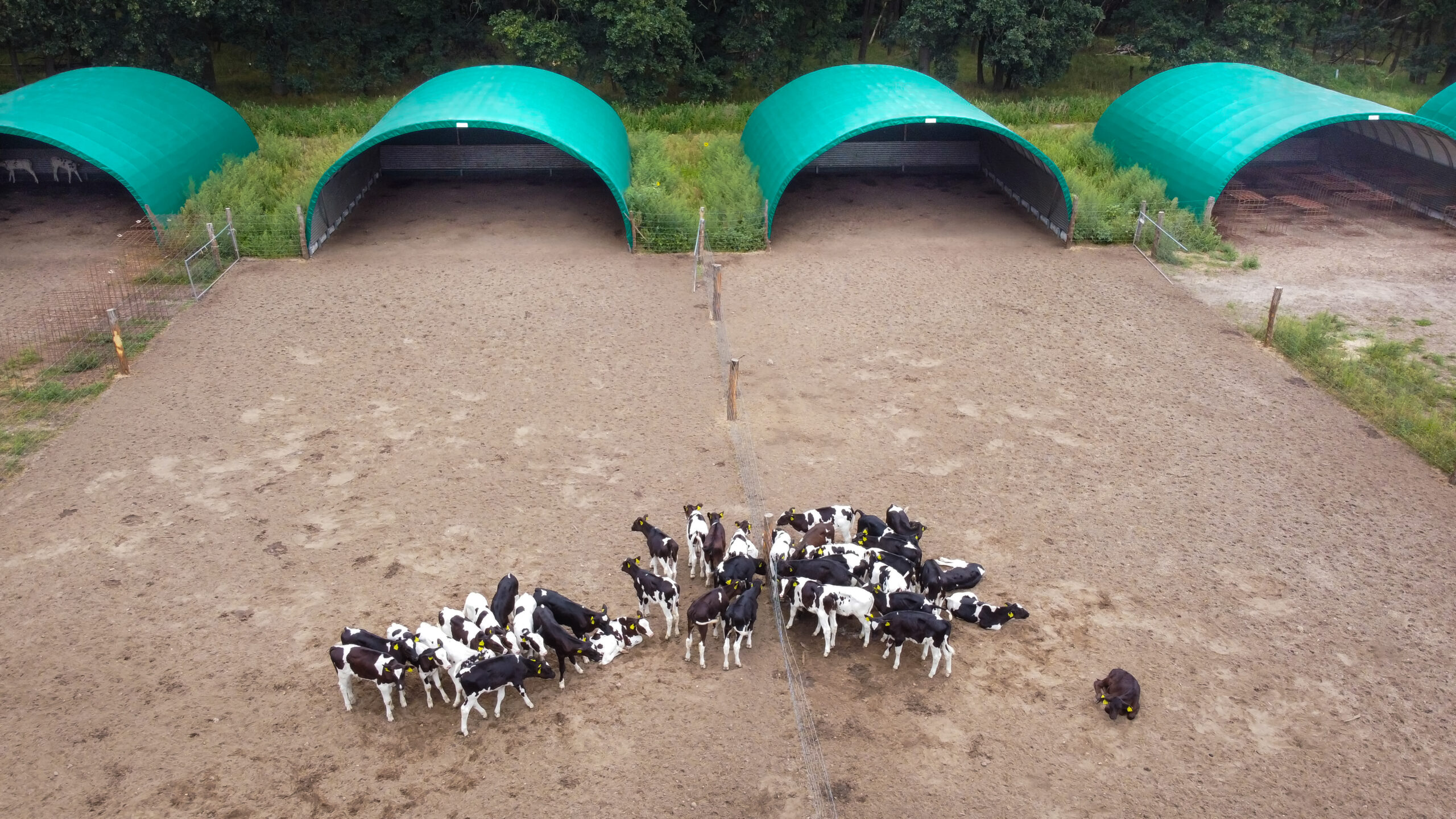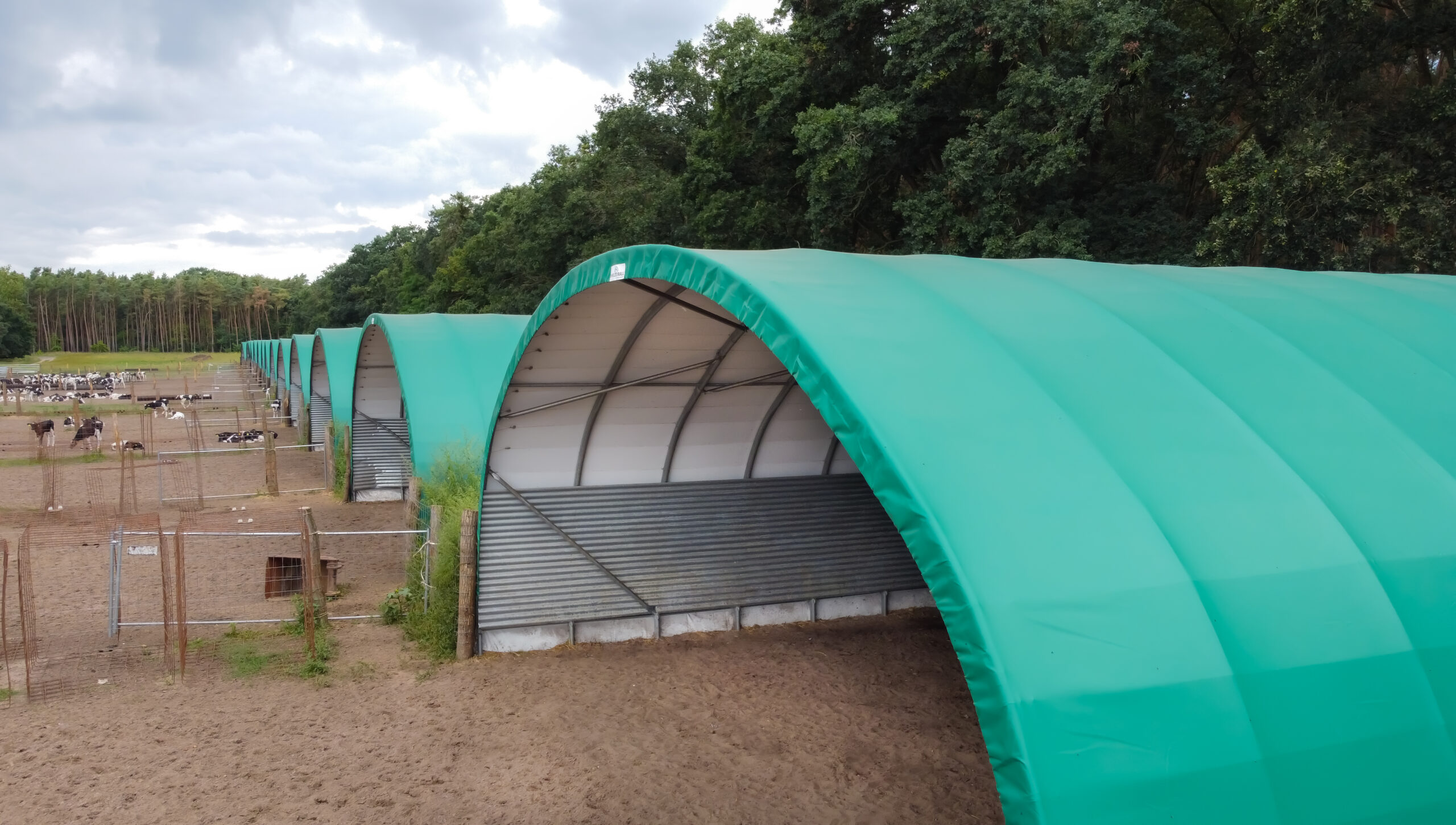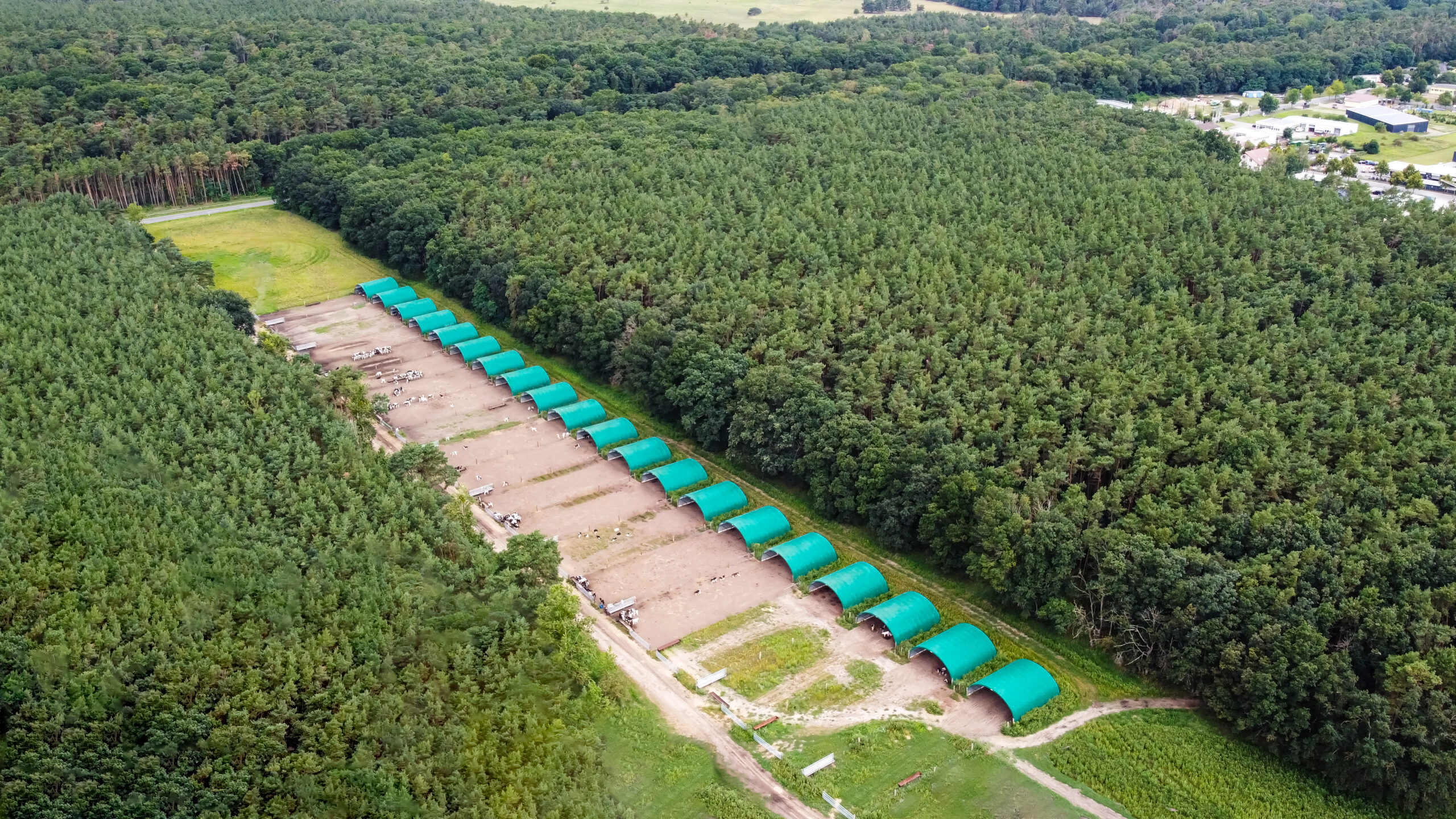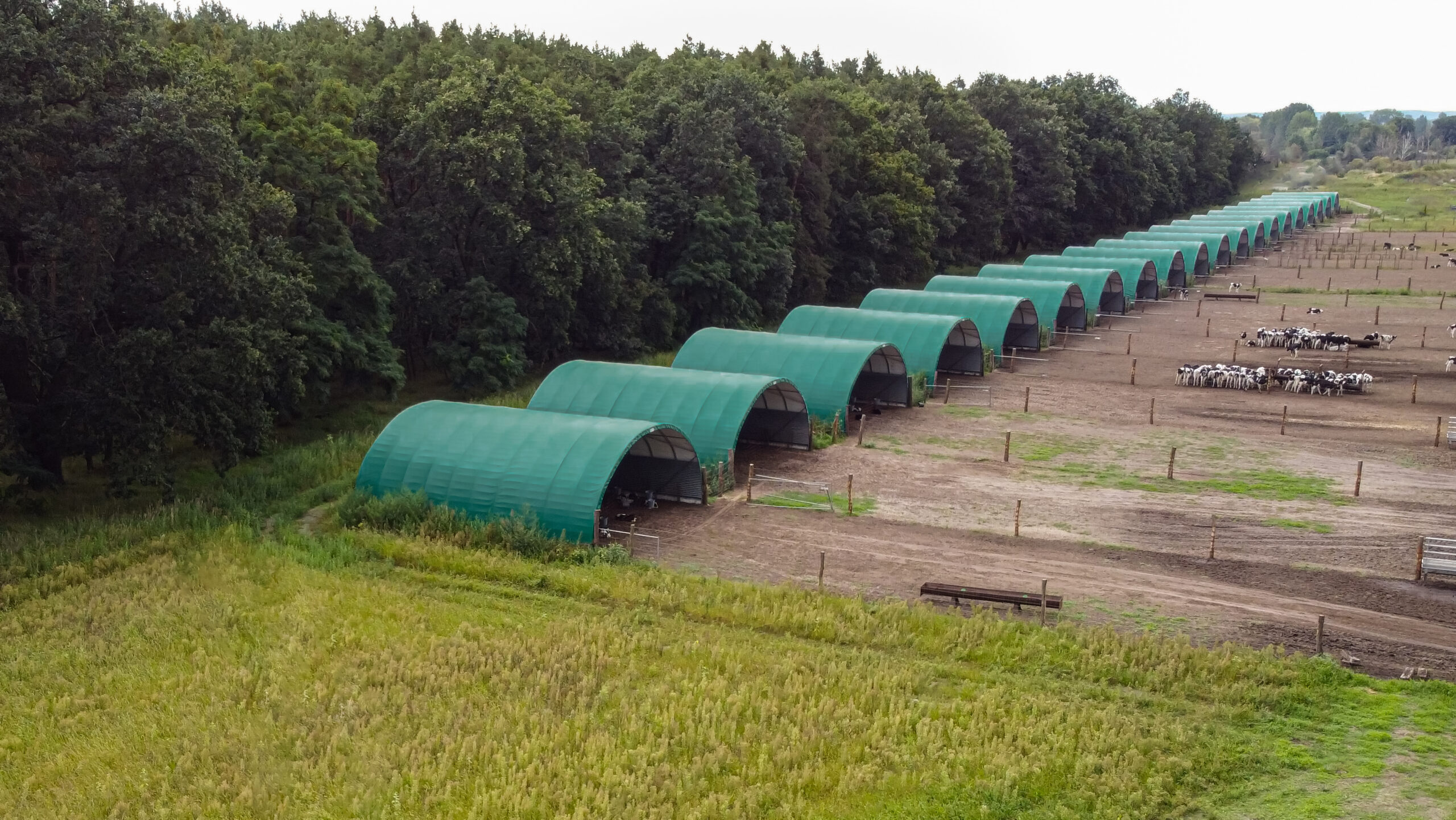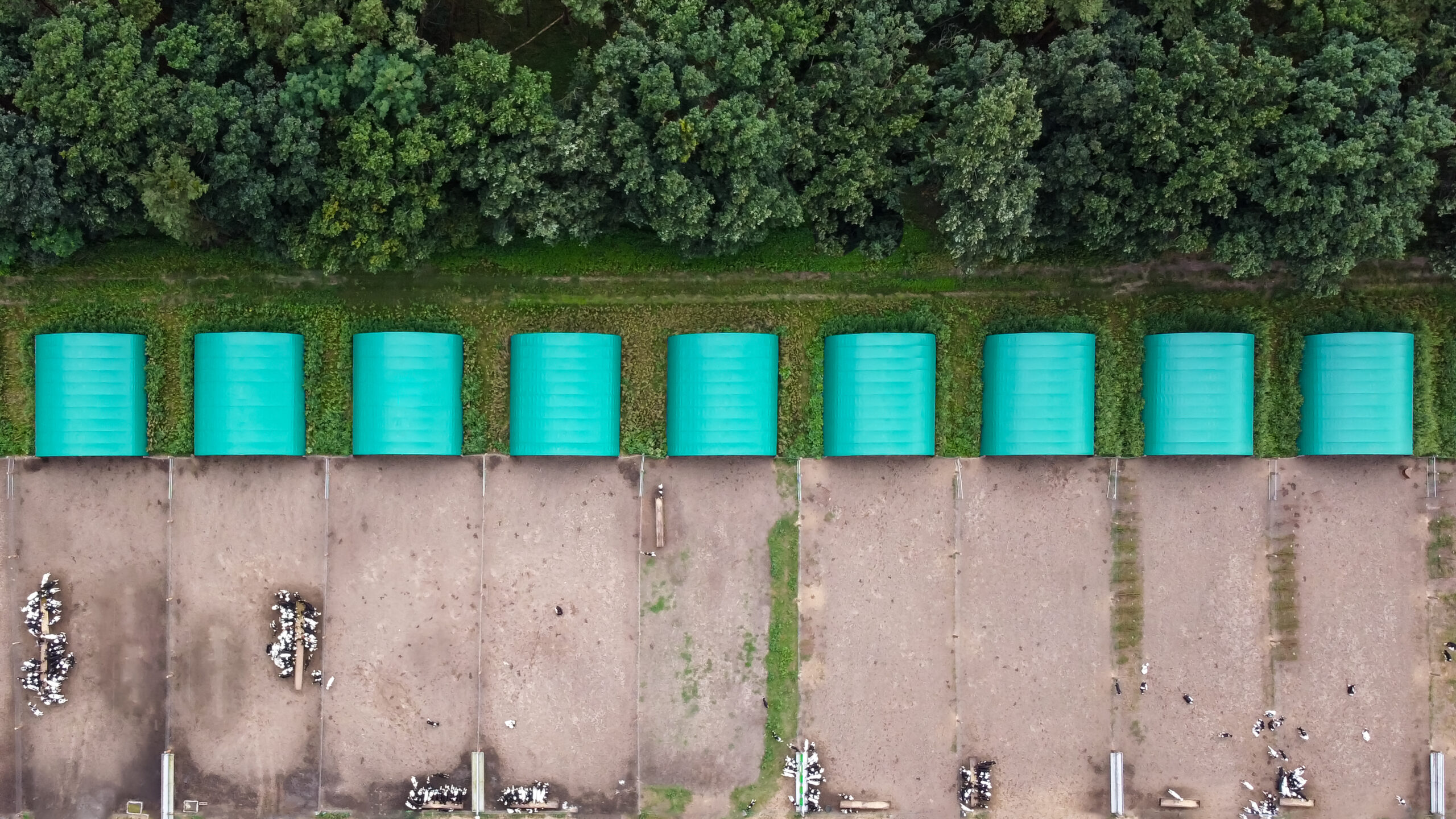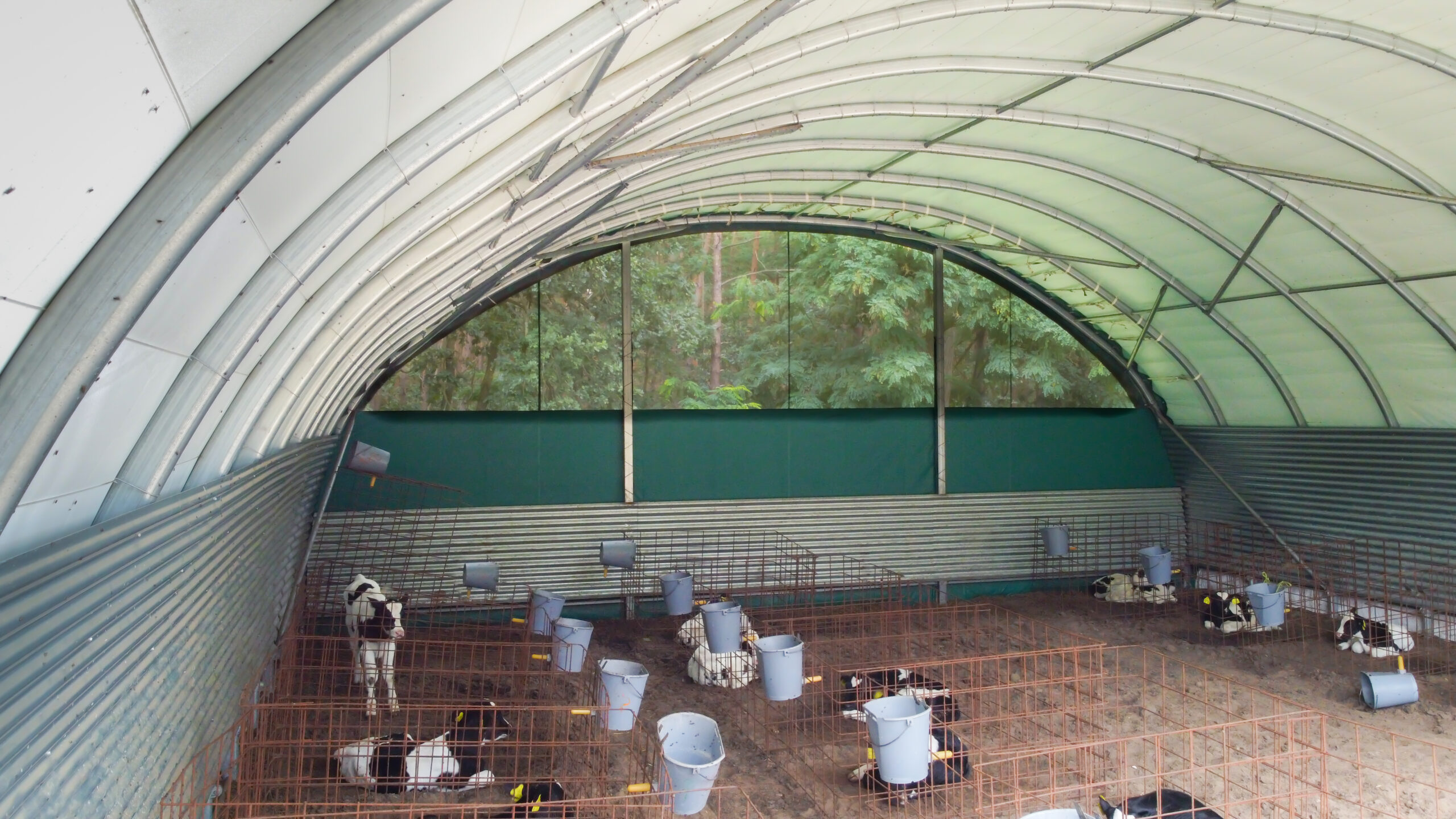20 SHELTERALL® 9.3 m x 10 m
The solution
Mr Van Leeuwen was looking for a simple, economical and quick-to-install solution to develop his farm. He wanted to group his calves together and give them a vast space by creating separate pens for fifteen or so animals.
Concerned about the well-being of his herds, he called on the SHELTERALL® teams to replace his igloos with livestock breeding tunnels that promote animal comfort and allow the calves to grow in a high-quality atmosphere. Twenty SHELTERALL® sheds were installed next to each other. Each shelter opens onto a large pen so that the calves can relax and move freely in and out of the shed. They can be grouped by age.
SHELTERALL® livestock breeding tunnels provide the right volume of air, excellent light and highly efficient ventilation thanks to the tunnel effect. Mr Van Leeuwen is particularly pleased with the wind-break net gables installed at the back, which ensure optimum air circulation. This natural ventilation removes ammonia and dust and provides ideal air circulation to avoid heat stress.
The natural, diffuse and uniform light inside the shed also soothes the animals.
Protection sheets were installed to limit contact with the animals, as well as for safety, hygiene and protection during the maintenance of the tunnel.
Mr Van Leeuwen particularly appreciated the flexibility and modularity of SHELTERALL® solutions, which enable him to adapt to changes in his farm because of the ease with which they can be moved and extended.
This project of 20 sheds was entirely assembled by the farmer, who is now fully satisfied with the solution and will be installing 5 more tunnels shortly. The SHELTERALL® livestock shelter can be assembled by farmers or their partners.
The options for this project
- Protection sheets
- Mixed tarpaulin / wind-break net gable
"The SHELTERALL® teams are very proud of this major achievement. Installing 20 livestock breeding tunnels side by side is a first in Germany! The villagers are extremely happy too, and the children enjoy coming to the farm to see the calves grow in their new environment"
